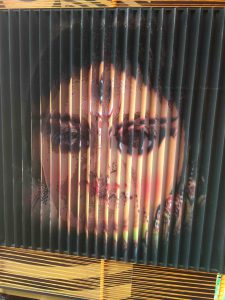Day 2 continued…
As per the plan, we were supposed to head for lunch to a restaurant nearby, but it was only 10:15 am; we had at least a couple of hours before they would open. We could return to the hotel but decided to explore the place instead of sitting in our hotel room. We searched Google maps for a place to beat the heat and while away some time. The ideal spot seemed to be a park with a lake, 1 km away. On the way, we bought a couple of water bottles to quench our thirst. The neighbourhood near the park was quiet; it took us a while to find the entrance amidst the fencing around the park – this was a pretty huge park within the city. There were plenty of trees and also benches near many of them. The lake, the Rabindra Sarovar Lake, was pretty large, and the park enclosed the lake. Aaron spent the time capturing scenic views.
(Note: you can click on any image in the blog to view the larger image)
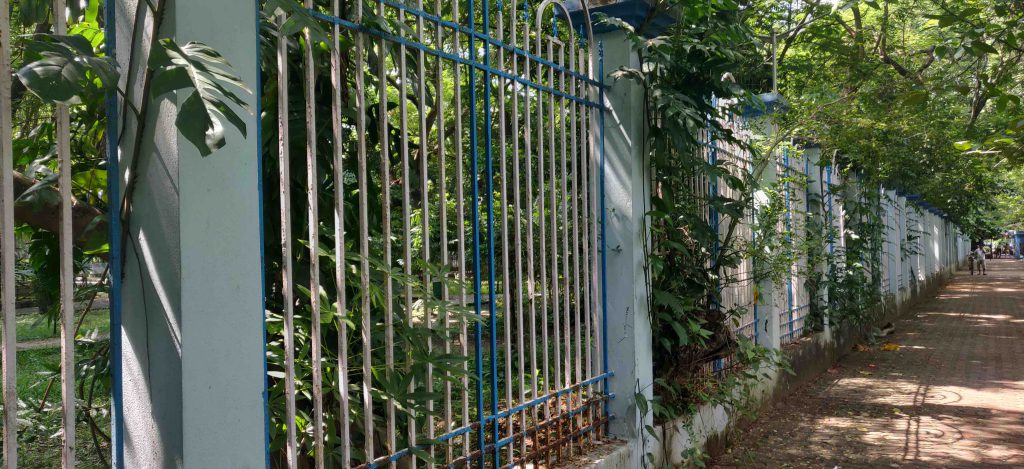
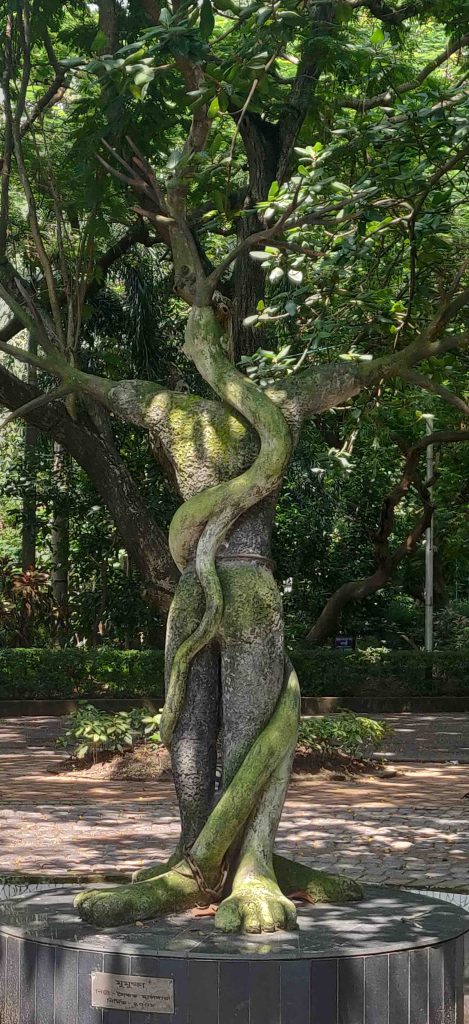
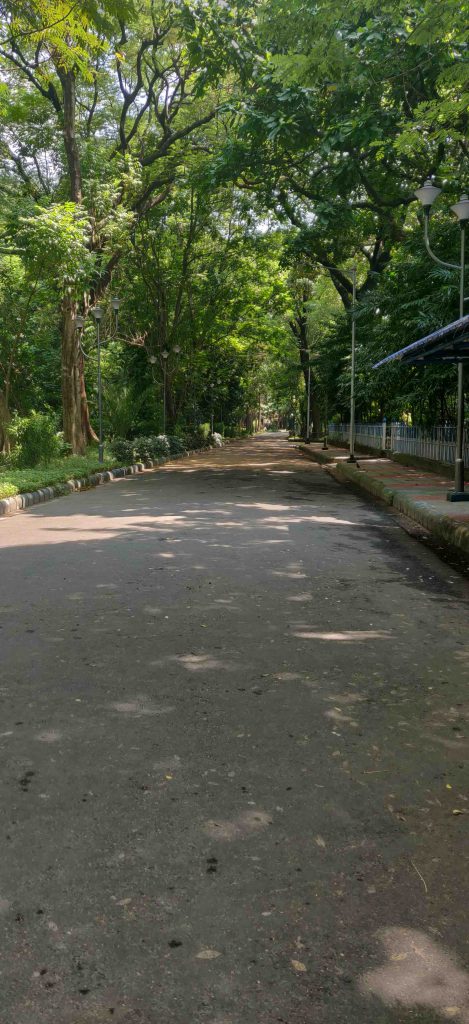
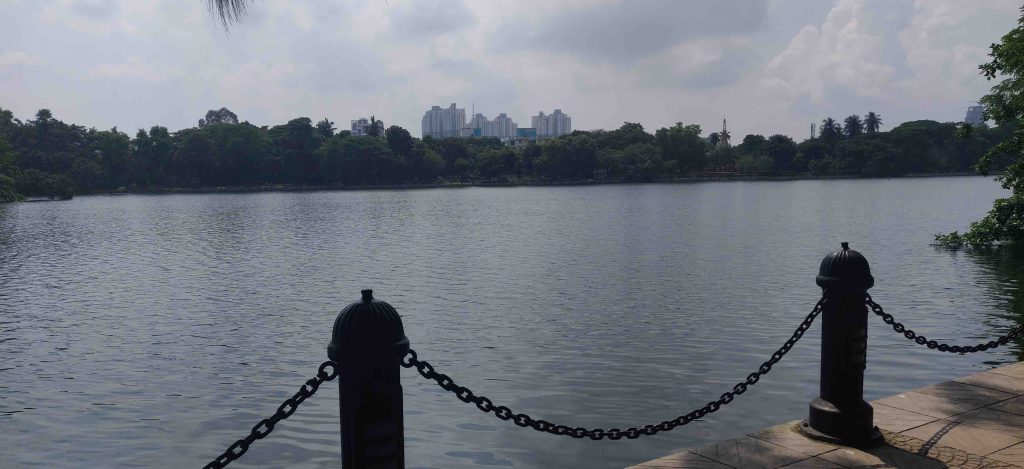
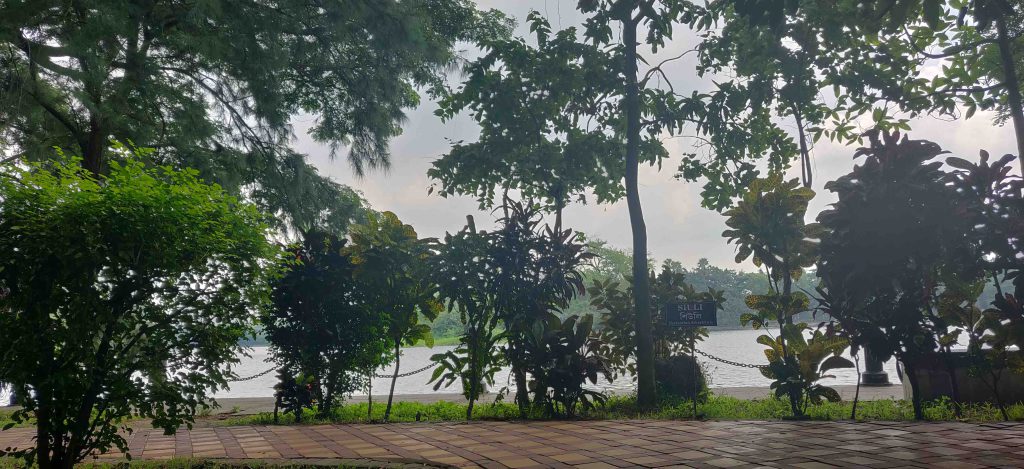
There were only a handful of people at this hour – can imagine it being crowded in the morning because this was a perfect place for morning walks. We walked through the trails – most had complete tree cover shielding us from the sun. A board said there were free meditation classes every morning at 6 am; another board said the laughing club operated at 6:15 am, and everyone was welcome to join.
We headed back towards the Gariahat area to get to the restaurant Deb had recommended for lunch. But on the way, we noticed a decorated archway and opted to detour through this path to see what pandal it would lead us to. It was the BCA (Ballygunge cultural association) pandal. This one had a rundown setup – outside the pandal, up in the sky, there were plenty of clotheslines strung parallel to each other on which white clothes were hanging, as if for drying. The exterior of the pandal was made of wooden planks and rusted metallic sheets stuck together. Inside the pandal, it was a dark setting with rows and rows of metal bins stacked on the sides like walls of the house; the soft music running in the background made for a great experience.
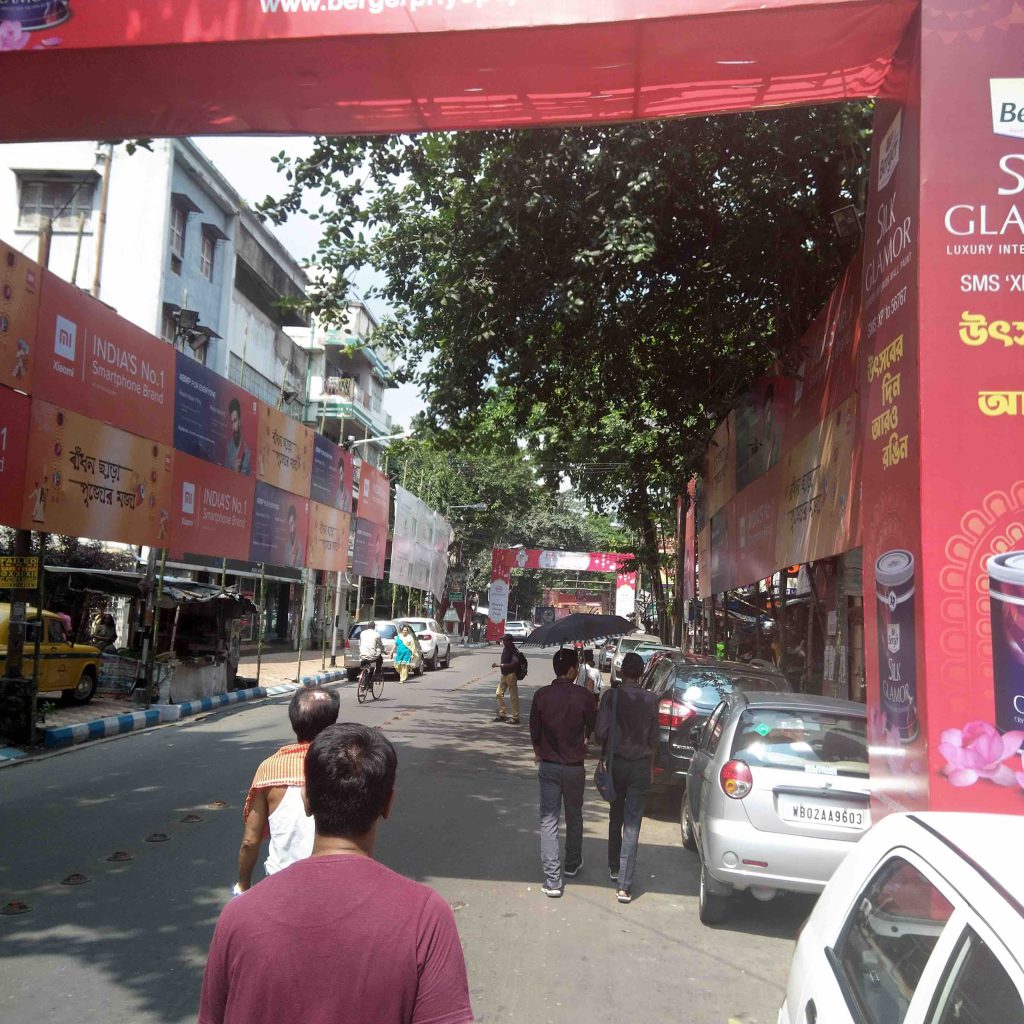
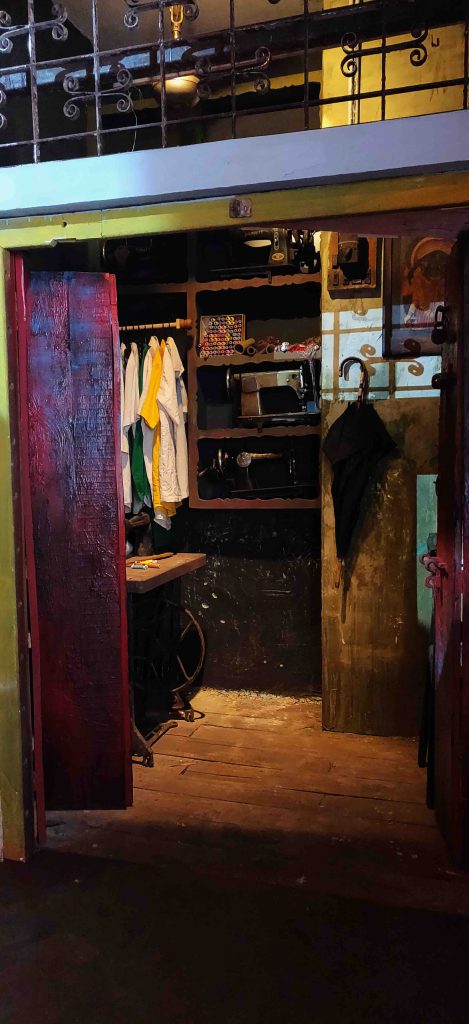


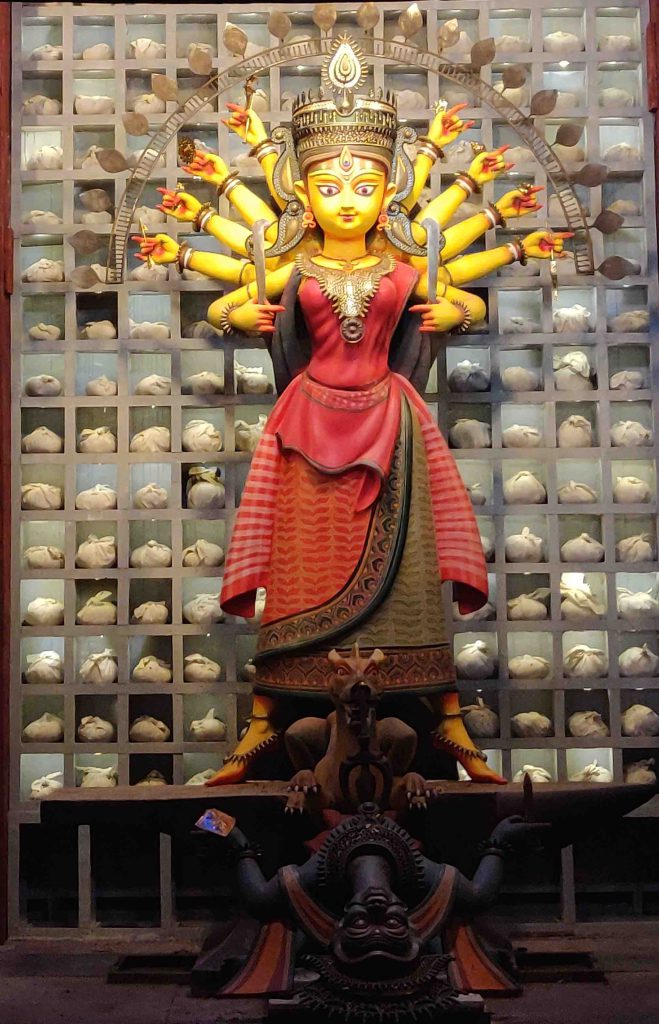
The centre of attraction was where the light source was, around Goddess Durga, with her 10 arms, standing atop the slayed demon who lay on his back. I’m sure that to create such a low-key-looking setup would have been a painstaking task – the end result was really impressive. Seeing the clothes, the homely setting inside with items typically found in a home, clothes stacked on shelves behind the Goddess, the abundance of bins etc., we could guess that there was some theme though we didn’t know exactly what it was; but even without knowing, you’d find the artwork impressive.
When we exited the BCA pandal, we were in a street filled with bamboo artefacts and huge bamboo figures. I later found that the theme of this pandal was based on ‘jugalbandhi’ (meaning ‘entwined twins’) – they had used a mix of modern materials (like steel, iron etc.) and traditional materials (like bamboo). Every pandal had a story to tell!
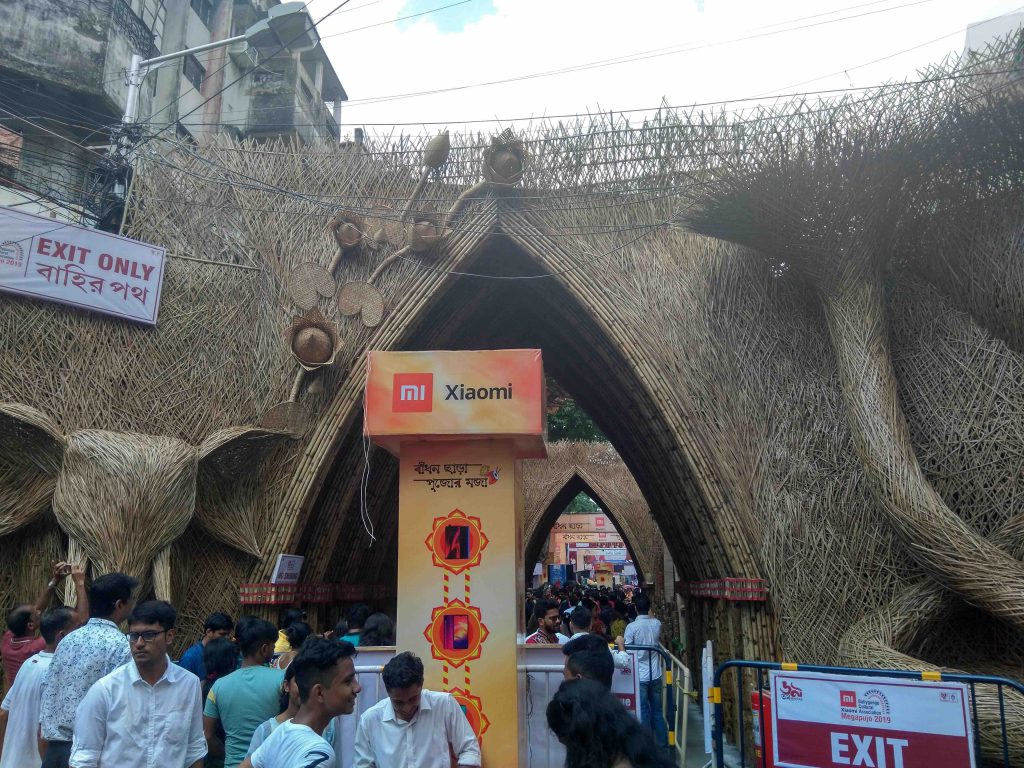
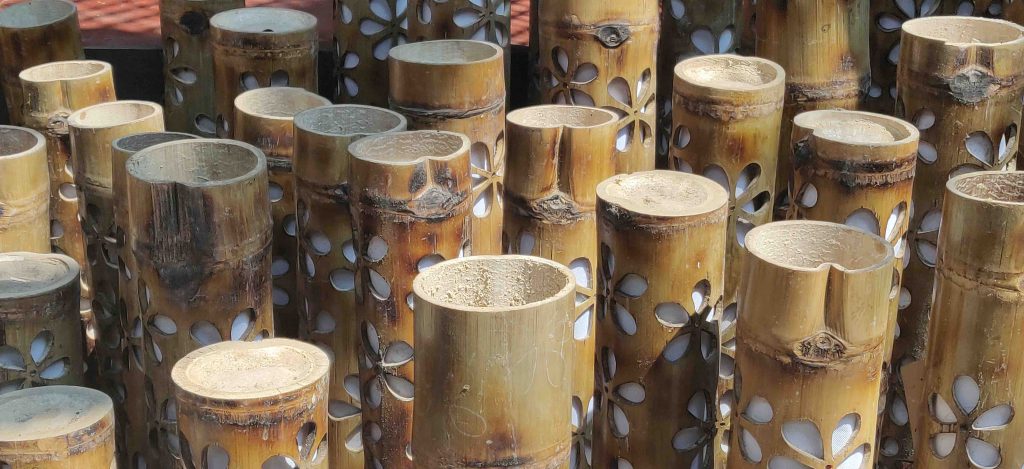
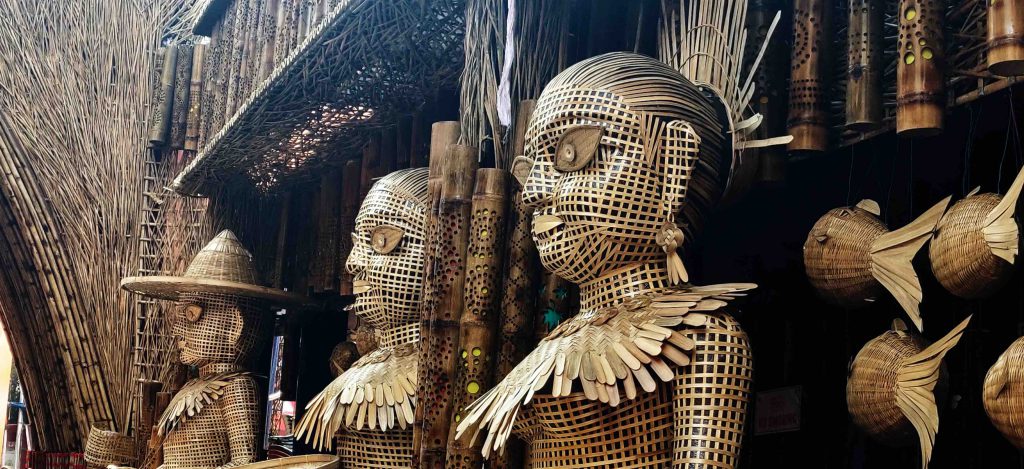
It was 12:10 pm when we came out onto the main road. On the way to the restaurant, we noticed another archway – lunch was waiting, but we decided to check out this pandal as well – the Tridhara pandal. We had heard stories of how places would be packed in Durga puja times – but so far, the crowds we saw in the pandals were light, and this was the first day of Durga puja. Just near the entrance to this pandal, there was a lounge, but it was closed.
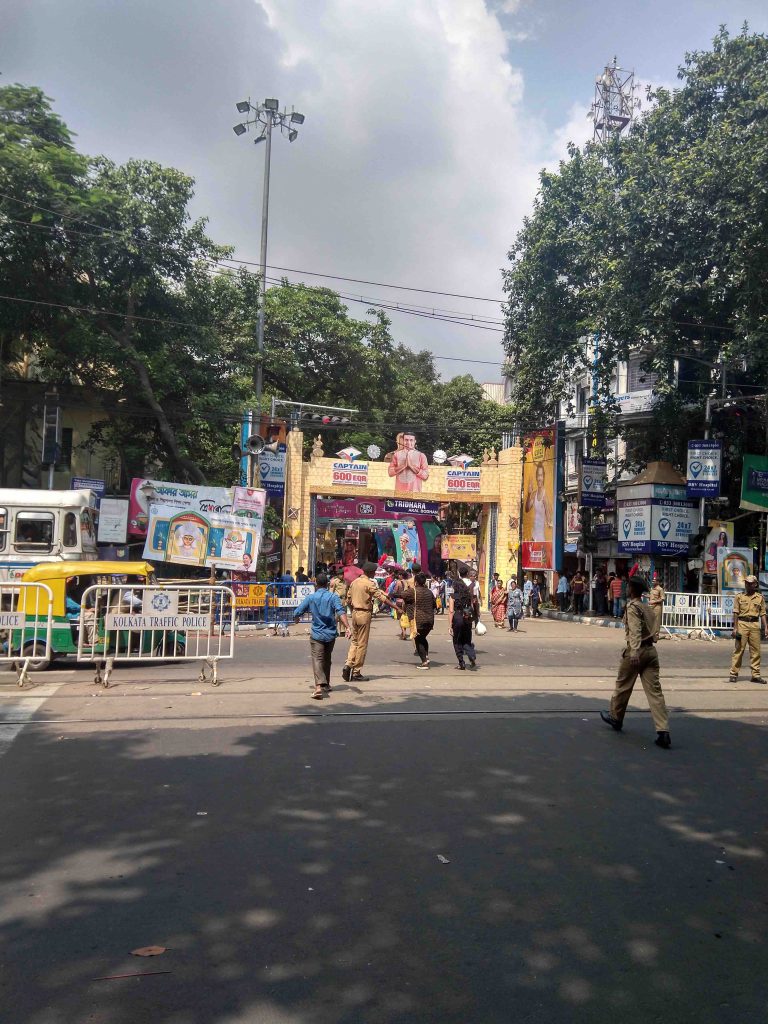
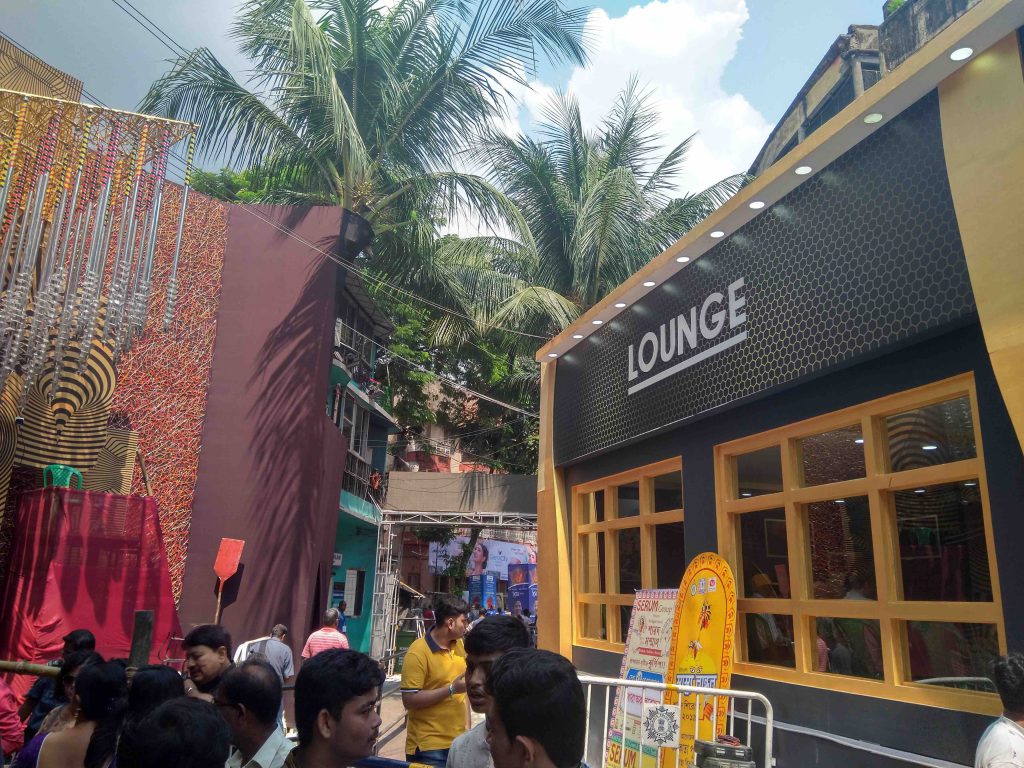
The Goddess in red
This pandal wasn’t in an enclosure; instead, it was on the road itself. The minute we entered, we were struck by the red hue, the contrasting colors of red on the stage, and umpteen white lotuses below. On the right side, in the background, were portraits of different women constructed of what seemed like small mirrors. At the centre was a red lotus, and in the middle of that was the Goddess holding a trident with all ten hands – the trident is what was used to slay the demon. Down below were sculptures of her four children, who were much smaller in size, but all of them were sculpted in a similar style to blend with the shape of the lotus. The 4 children were Lakshmi (the God of wealth), Saraswati (the God of knowledge), Ganesha (the elephant-faced God – remover of obstacles) and Kartikeya (the God of war). These are the 4 Gods we see in all other pandals as well – just that in each pandal, the design is different per the theme.
The top of the pandal glittered in the dangling red and white coloured artwork – it was hard to figure out how they created so much work on the top because there was no solid ceiling – in fact, you could even see the sky through the gaps.
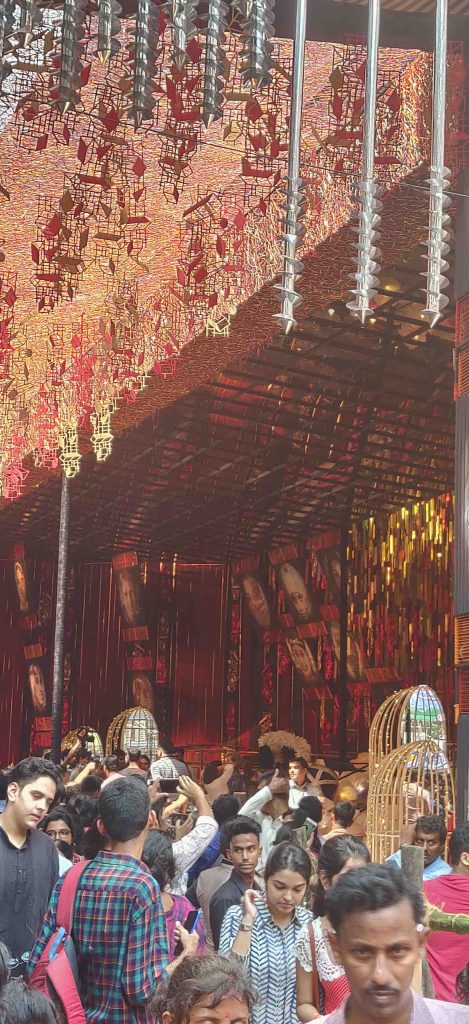
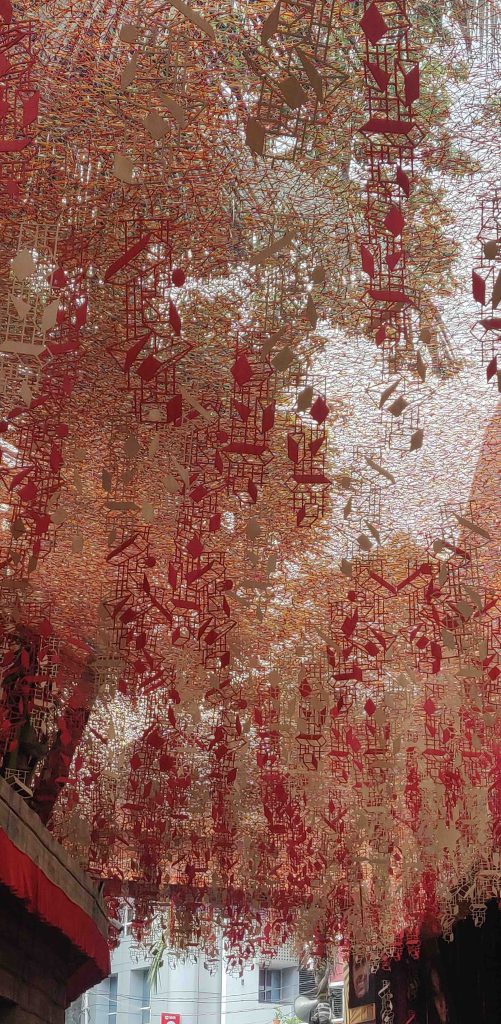
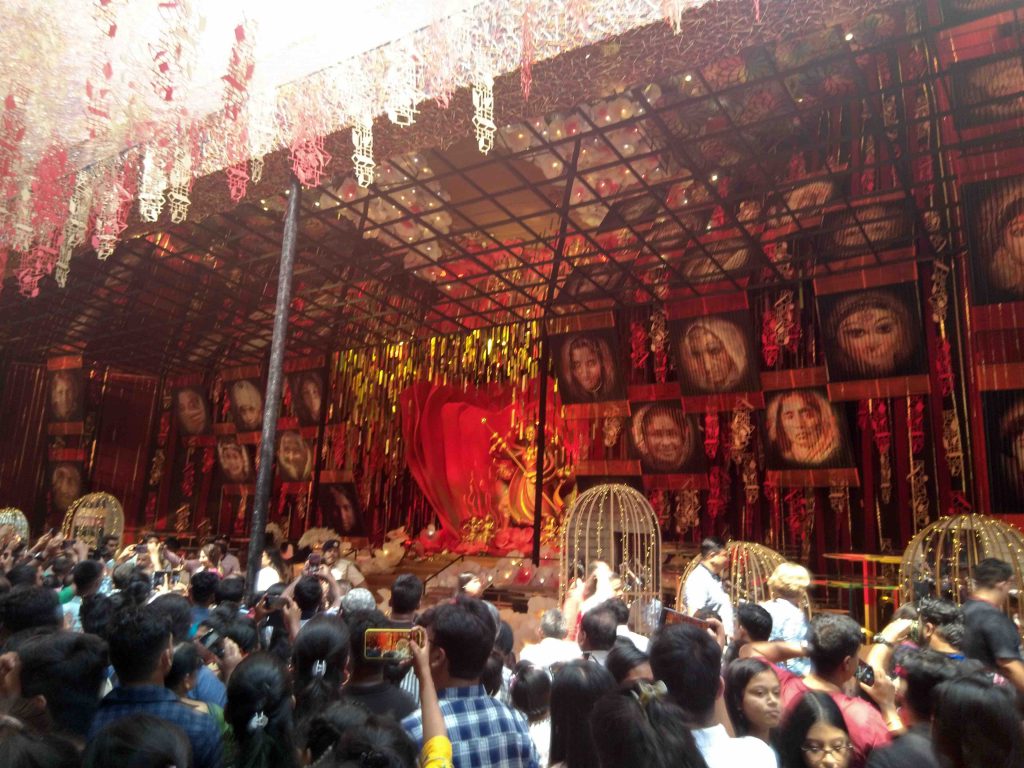
The Durga in the red lotus with the lighting effect inside the lotus was dazzling. The backdrop was such that from one side, you would see the faces of different women, but as you moved further down the road, you would see the face of the Goddess appearing in each spot where there was a woman’s face – it was like a dual portrait; perhaps to symbolize that the Goddess was present in everyone.
From different positions in the pandal, the lighting felt different due to the use of mirrors and glass strips. Below the Goddess, within the white lotuses, there were a few large bird cages.
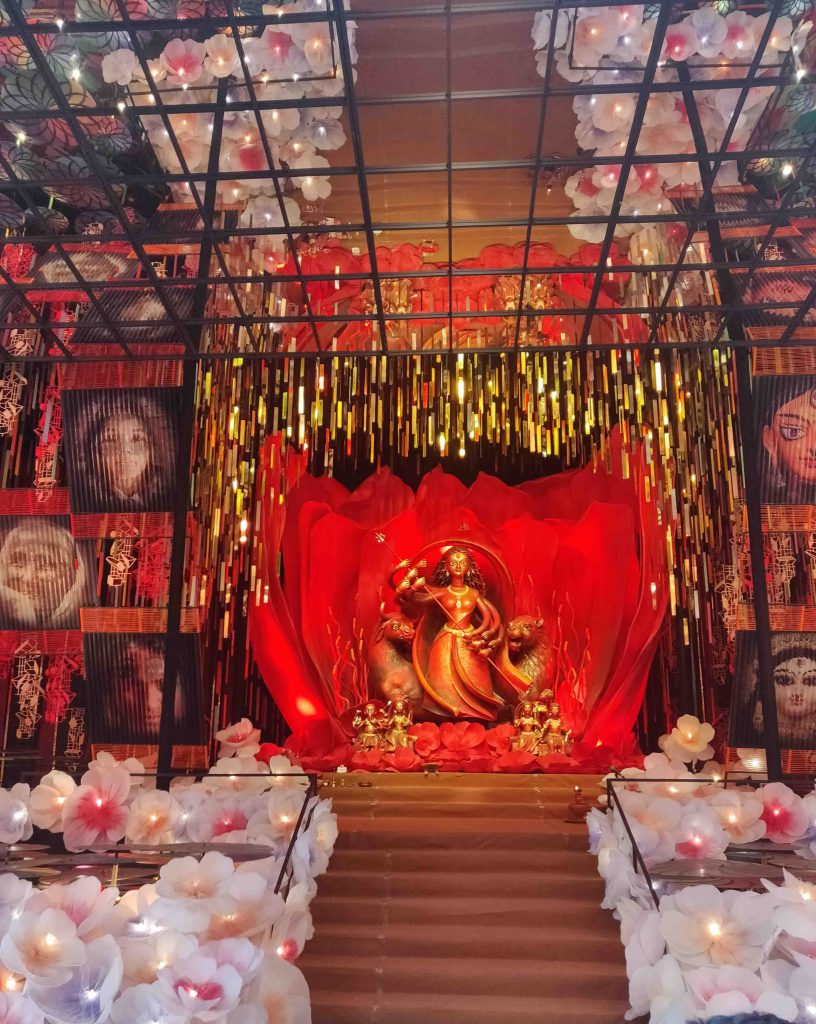
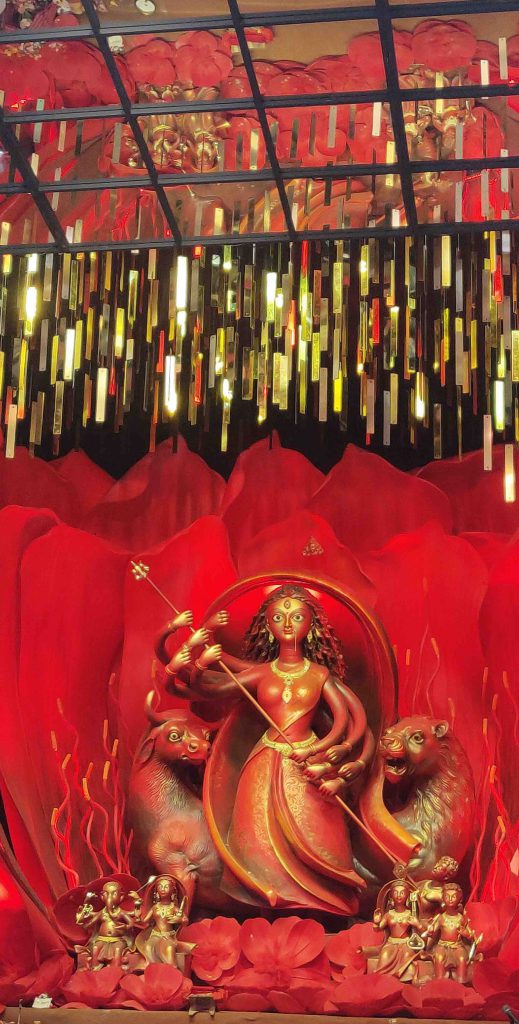
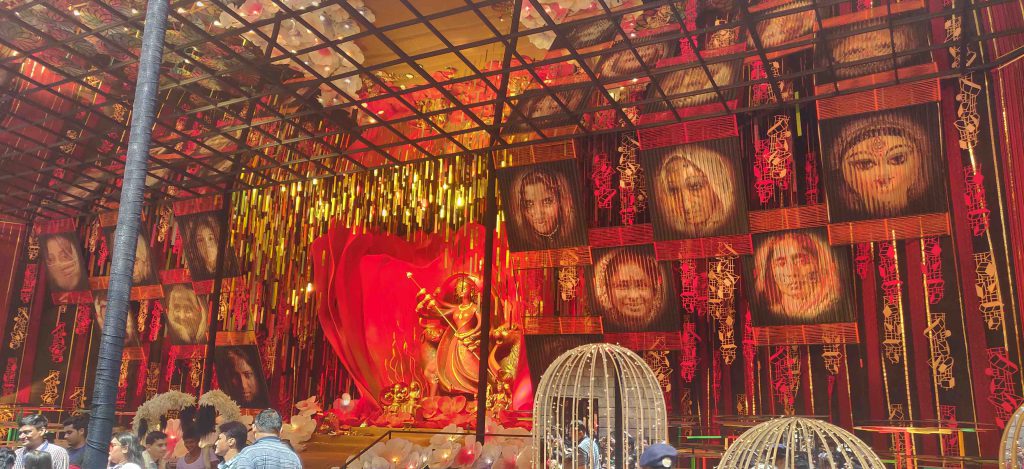
The theme for this pandal was perception, and just like viewing art, different people would interpret the meaning of the various elements in this pandal differently – dedication to women, confinement by society, discovering the strength within, oneness, freedom etc.
The crowd had picked up while we were in the middle of the pandal; we were shoulder to shoulder with people and let the crowd nudge us along – if not for the crowd, we’d definitely have spent more time simply standing and admiring the work; such was the splendour.
